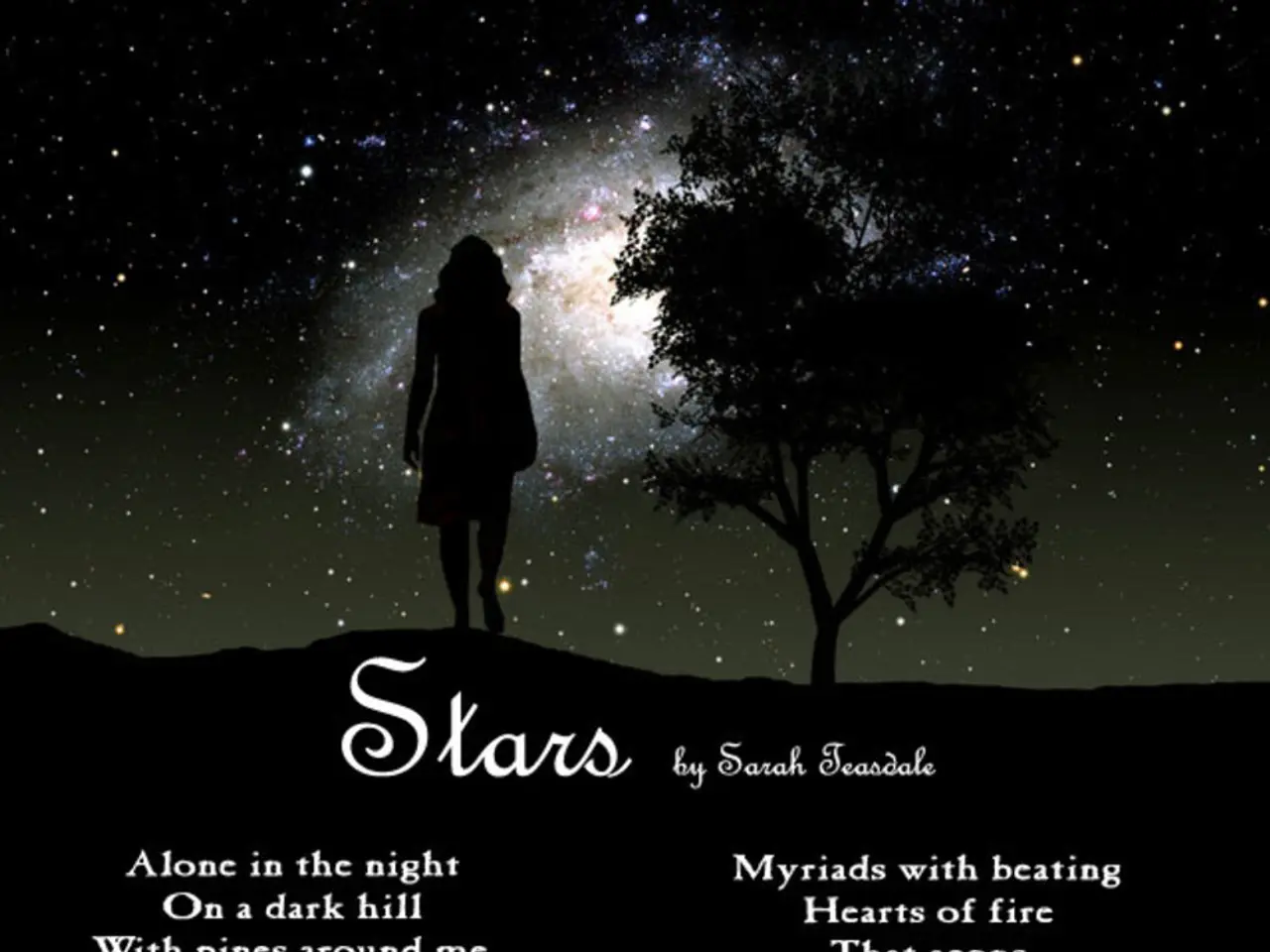Unveiling the Mechanics of Poetic Expression
Exploring the Rich History and Diversity of Poetic Structures
Poetry, a timeless form of expression, has evolved over centuries, shaped by oral traditions, cultural exchanges, and literary innovations. Let's delve into some of the most popular poetic structures that have graced our literature.
A sonnet, originating in 13th-century Italy, is a fourteen-line poem with a specific rhyme scheme. The Petrarchan sonnet and the Shakespearean sonnet are two popular types. Over time, this structure has been adapted across Europe, particularly in English literature, developing different rhyme schemes and thematic structures.
Ballads, with roots in the medieval oral tradition of storytelling through song, are usually narratives in simple, repetitive stanzas. Originally passed down orally, they were fixed in writing around the late Middle Ages.
Haiku, originating from Japan, evolved from earlier forms like the hokku, which was the opening stanza of linked-verse poetry (renga). It became a standalone, highly compressed form of three lines and 17 syllables, emphasizing seasonal and nature imagery by the 17th century.
The sestina emerged in medieval Provence in the 12th century, attributed to Arnaut Daniel. It is a complex fixed form involving the repetition of six end-words in a prescribed pattern across six 6-line stanzas, followed by a three-line envoy.
Villanelle originated from a less formal, folk ballad-like song in the French vernacular tradition, becoming a fixed 19-line form in the early 17th century. It is characterized by its repeating end-rhyme sounds and a specific pattern in repeating its lines.
Ode dates back to ancient Greece, originally a lyrical poem sung with musical accompaniment, often elevated and formal, used to praise people, gods, or abstract concepts. Its form and content have evolved through Roman and later English adaptations.
Elegy began as a Greek poetic form characterized by couplets in dactylic hexameter, often expressing lament or mourning. Over time, it became a more generalized poem of lament across Latin and European traditions.
Epigram originates from Ancient Greece as a short inscribed poem, often witty or satirical. Its form and content have evolved, especially through Roman poets like Martial, into brief, pointed poems.
Aubade developed in medieval European lyric poetry, especially French and English, as a morning love song or dawn song, often describing lovers parting at daybreak.
Epistle has roots in classical literature, particularly Latin and Greek, as a poetic letter form addressing individuals with a didactic or personal tone. It evolved as both a poetic and prose form through the Renaissance and beyond.
These forms reflect the evolution from oral traditions to fixed literary conventions, with influences from cultural exchanges—Greek and Roman poetry informing Western forms, Japanese poetic aesthetics influencing haiku, and vernacular folk songs shaping villanelles and ballads. The historical development of alphabetic writing systems circa 2,000 BCE onward made poetry more recordable and standardized, facilitating the preservation and evolution of distinct poetic forms.
In summary, these poetic forms evolved over centuries through a combination of oral traditions, cultural transmission, regional literary innovation, and formal codification, resulting in the diverse and structured poetic landscape recognized today. An elegy is written for or about someone who has died, while an ode is a poem written to celebrate a person or thing. A ballad is usually written in stanzas of four lines each, with a meter that alternates between iambic tetrameter and iambic trimeter. Poetic structures and forms have developed over many centuries and have been shaped by various poets and movements in poetry.
- While exploring diverse poetic structures, one might also delve into different aspects of a modern lifestyle, such as fashion-and-beauty, food-and-drink, home-and-garden, relationships, pets, travel, cars, education-and-self-development, personal-growth, and shopping.
- After penning a poignant elegy, a poet might indulge in a delightful rapper's lifestyle, showcasing their career-development and passion for sports.
- As the sun sets, one can appreciate the sonnet's structure, similar to the simple, repetitive stanzas often found in ballads, renewing feelings of personal-growth and tranquility.
- While preparing for a trip across Europe, one might find solace in researching the various origins of haiku, villanelle, and sestina – poetic forms that have shaped the literary landscape.
- The weather may not be ideal for a weekend outdoor adventure, but reading about the history of the epigram or aubade could provide an insightful self-development moment at home.
- For the bookworm seeking additional knowledge, delving into the historical evolution of poetic structures in English literature could serve as an inspiring educational journey.
- As poetry continues to influence various aspects of contemporary life, the exploration of these timeless forms and their origins serves as a testament to the power of language and human creativity.




